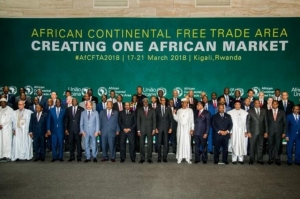The AfCFTA is an opportunity for Africa’s recovery
With post-Covid recovery threatened by the war in Eastern Europe, accelerating the implementation of Africa’s free trade area could provide much-needed impetus. With a growth rate of 4.5% in 2021, sub-Saharan Africa’s economy was starting to recover from the worst effects of the Covid-19 pandemic but this progress has been jeopardized.
The invasion of Ukraine, by Russia, has increased the global prices of key commodities. Most notably, surging oil and food prices are straining the fiscal balances of many countries and have increased food insecurity concerns. Worryingly, 39m more people fell into extreme poverty in 2020 and 2021, reversing a long-term trend of decreasing poverty.
In this context, sub-Saharan Africa imports about 85% of its wheat, and several countries source a large proportion of these imports directly from Ukraine and Russia. Indeed, lessons learned from the pandemic – related to the supply of personal protective equipment and vaccines – have underscored that the region needs to achieve free but secure trade. Looking ahead, policymakers will need to navigate this uncertainty with fewer policy options.

Key benefits of implementing AfCFTA
Accelerating the implementation of the African Continental Free Trade Area (AfCFTA) would provide the region with much needed stimulus and drive the region’s long-term recovery and growth. Comprising 55 countries with a population of 1.3bn and combined GDP of about $3.4 trillion, the AfCFTA is the largest free trade area in the world, both by area and by the number of countries. Currently, 54 of the 55 African countries have signed the agreement, and 41 countries have ratified it.
Deeper integration would boost incomes, create jobs, catalyse investments, and facilitate the development of regional supply chains. Intra-African trade remains small compared with the continent’s external trade. In 2020 just 18% of exports were to other African countries, lower than the equivalent shares in North America (30%), Asia (58%) or Europe (68%).

